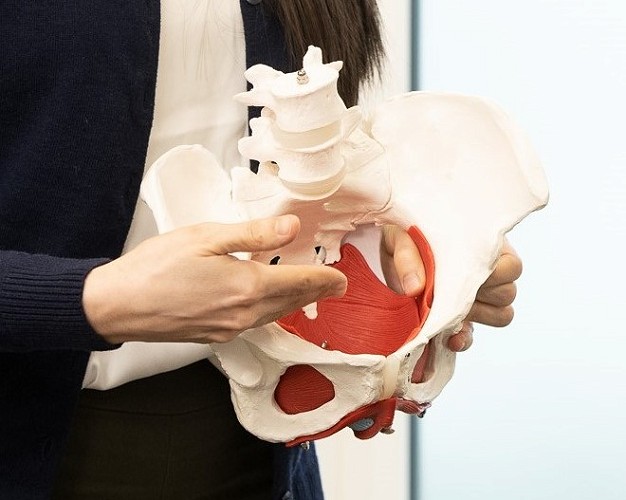Office Ergonomics & Improving Your Workspace
Article by Danielle Roberts
Ergonomics is the science of designing the workplace environment to fit the worker. By adjusting the workstation to the individual needs of the worker, many common injuries can be prevented.

What are factors that can lead to an injury in an office job?
- Static postures that are frequently awkward, uncomfortable and sustained for long periods of time
- Repetitive and forceful hand movements
- Fast-pace work environments
- Contact stress (i.e. leaning against an edge of a desk cutting off circulation
Did you know? More than 50% of office workers have never even adjusted the height of their desk chair! [1,2].
Where does poor work posture originate?
- The layout of the workstation is not adjustable or is not suitable for its user
- Lack of knowledge and experience on how to set up an adjustable workstation properly
- Poor working habits that remain uncorrected
- Sitting uninterrupted for longer than an hour at a time
Key concepts for improving workplace set-up [3]:

Keep in mind:
- Neutral postures are good. These are the positions our bodies take in the absence of gravity and where injury is least likely to occur.
- Micro-breaks are good. Avoid sitting for prolonged periods of time. Avoid any position for long periods of time.
Tips for configuring your workspace
Chair set-up
- Choose one with maximum adjustments and simple controls
- Feet should sit flat on the floor or on a footrest
- Hips should be at approximately 90 degrees
- Elbows should rest comfortably on arm rests at approximately 90 degrees
- Lumbar region of the spine should receive support from the back rest
Keyboard set-up
- Avoid dropping wrists when typing
- Use a negative tilt and make sure there is no bend in the wrists (do not use the tabs on the back of the keyboard)
- Palm rests can help maintain a neutral posture
Mouse set-up
- Same height as keyboard
- Avoid over-reaching for the mouse
- Do not over grip or click too hard
- Release mouse when not in use
Monitor set-up
- Screen height should be at or below eye level
- Screen should be approximately arm’s length away
- Adjust resolution and contrast to decrease eye fatigue, especially if by a window
Accessories:
- Document holders and book stands should be used to prop up documents. They should be directly in front of you and below the computer monitor.
- Footstools can be used both for seated desks and to rest one foot on when at a standing workstation
- Headsets can help prevent awkward neck and shoulder positions while on the phone
You should feel comfortable!
Need a hand recovering from an injury?
If you have developed an injury that is interfering with your ability to work or your workplace set-up is aggravating your symptoms, access help from a physiotherapist to not only treat your injury but to help with your workplace ergonomics.
By working together with a physiotherapist, you can address your individual goals and needs to best improve your quality of life and reduce future health complications.
References
- Office Ergonomics [Internet]. US Ergonomics, 2020 [cited March 5, 2020]. Available from: https://us-ergo.com/workplace-ergonomics/office-ergonomics/
- Vink, P., Porcar-Seder, R., Page de Pozo, A., & Krause, F. (2007). Office chairs are often not adjusted by end users. Proceeding of the Human Factors and Ergonomics Society Annual Meeting, 51 (17): 1015-1019.
- WorkSafeBC (2009). How to make your computer workstation fit you. Available from: https://www.worksafebc.com/en/resources/health-safety/books-guides/how-to-make-your-computer-workstation-fit-you?lang=en
You May Also Like...
-
 ArticleView Post
ArticleView PostTreating Urinary Incontinence
Involuntary leakage is a common issue that comes in many different forms. So how can physiotherapy help treat urinary incontinence?
-
 ArticleView Post
ArticleView PostPelvic Organ Prolapse – Prevention and Management
Pelvic organ prolapse (POP) is a condition that affects many women. The symptoms can be very uncomfortable, and sometimes can be awkward or embarrassing to talk about. The incidence of this increases after childbirth and as women increase in age, but awareness and prevention strategies can help decrease the chances of developing this condition.
-
 ArticleView Post
ArticleView PostStrengthening the Intrinsic Muscles of the Foot
Learn about the importance of exercising and strengthening your foot's intrinsic muscles – as well as what they are!